
Andong: The Heartbeat of Korean Culture and Tradition
Discover Andong: A Journey Through Korean Tradition, History, and Culinary Delights in South Korea's Cultural Heart.
Nestled in the heart of South Korea, Andong is a city where history and culture come alive. Known as the 'Capital of Korean Spirit,' Andong offers a unique blend of traditional Korean culture, natural beauty, and modern amenities. Its rich history dates back over a thousand years, making it a treasure trove of cultural and historical sites. The Hahoe Folk Village is one of Andong's most famous attractions. This UNESCO World Heritage site is a living museum showcasing traditional Korean houses, known as hanok, and preserving the way of life from the Joseon Dynasty. Visitors can stroll through the village, see traditional mask dances, and even stay overnight in a hanok for a truly immersive experience. Andong is also famed for its annual Mask Dance Festival, which brings together performers and visitors from around the world. The festival features traditional Korean mask dances, known as talchum, along with international performances, parades, and various cultural activities. It is a vibrant celebration of the city's cultural heritage. Food enthusiasts will find Andong a culinary paradise. The city is renowned for its Andong Jjimdak, a delicious braised chicken dish, and Heotjesabap, a traditional meal that was once served to Confucian scholars. Local markets and restaurants offer these and other regional specialties, providing a taste of authentic Korean cuisine. Nature lovers will appreciate Andong's scenic landscapes, including the serene Nakdong River and the picturesque Buyongdae Cliff. The Andong Dam and nearby hiking trails offer opportunities for outdoor activities and breathtaking views. The city's blend of natural beauty and cultural richness makes it a perfect destination for tourists seeking an authentic Korean experience.
Local tips in Andong
- Visit the Hahoe Folk Village early in the morning to avoid crowds and enjoy a peaceful atmosphere.
- Attend the Andong Mask Dance Festival if you visit in October for a vibrant cultural experience.
- Try the local dish, Andong Jjimdak, at a traditional restaurant for an authentic taste of the region.
- Explore the Andong Dam area and take a boat ride on the Nakdong River for stunning views.
- Stay overnight in a hanok (traditional Korean house) for a unique cultural experience.
Andong: The Heartbeat of Korean Culture and Tradition
Nestled in the heart of South Korea, Andong is a city where history and culture come alive. Known as the 'Capital of Korean Spirit,' Andong offers a unique blend of traditional Korean culture, natural beauty, and modern amenities. Its rich history dates back over a thousand years, making it a treasure trove of cultural and historical sites. The Hahoe Folk Village is one of Andong's most famous attractions. This UNESCO World Heritage site is a living museum showcasing traditional Korean houses, known as hanok, and preserving the way of life from the Joseon Dynasty. Visitors can stroll through the village, see traditional mask dances, and even stay overnight in a hanok for a truly immersive experience. Andong is also famed for its annual Mask Dance Festival, which brings together performers and visitors from around the world. The festival features traditional Korean mask dances, known as talchum, along with international performances, parades, and various cultural activities. It is a vibrant celebration of the city's cultural heritage. Food enthusiasts will find Andong a culinary paradise. The city is renowned for its Andong Jjimdak, a delicious braised chicken dish, and Heotjesabap, a traditional meal that was once served to Confucian scholars. Local markets and restaurants offer these and other regional specialties, providing a taste of authentic Korean cuisine. Nature lovers will appreciate Andong's scenic landscapes, including the serene Nakdong River and the picturesque Buyongdae Cliff. The Andong Dam and nearby hiking trails offer opportunities for outdoor activities and breathtaking views. The city's blend of natural beauty and cultural richness makes it a perfect destination for tourists seeking an authentic Korean experience.
When is the best time to go to Andong?
Iconic landmarks you can’t miss
Andong Hahoe Folk Village
Explore the timeless beauty of Andong Hahoe Folk Village, a UNESCO World Heritage site showcasing Korea's rich traditions and stunning landscapes.

Dosan Seowon
Explore the serene landscapes and rich Confucian heritage at Dosan Seowon, a UNESCO World Heritage Site in Andong, South Korea.

Byeongsanseowon Confucian Academy
Discover the serene beauty and historical significance of Byeongsanseowon Confucian Academy, a UNESCO World Heritage site in South Korea.

Andong Old Market
Explore Andong Old Market, a vibrant traditional market offering local delicacies and cultural experiences in the heart of Andong-si, South Korea.

Hahoe Mask Museum
Explore the Hahoe Mask Museum in Andong, a journey through Korea's rich mask culture and traditional performance art.

Bongjeongsa Temple
Discover the tranquility and beauty of Bongjeongsa Temple, a UNESCO World Heritage site nestled in the scenic landscapes of Andong, South Korea.

Manhyujeong Pavilion
Experience the serene beauty and rich cultural heritage at Manhyujeong Pavilion in Andong - a must-visit historical site in Korea.

Buyongdae Observatory
Experience unparalleled views and cultural richness at Buyongdae Observatory, a must-visit landmark in Andong-si, South Korea.
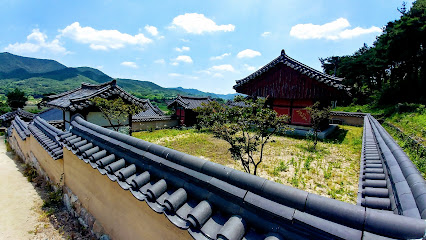
Hakgasan Hot Spring
Discover ultimate relaxation at Hakgasan Hot Spring in Andong-si, where nature and wellness converge in a soothing thermal experience.

안동중앙시장
Discover the vibrant Andong Market, where local flavors, crafts, and traditions come together in a lively atmosphere that embodies the spirit of South Korea.

Andong Imcheonggak
Discover the rich cultural heritage of Korea at Andong Imcheonggak, a historical site blending traditional architecture with stunning natural beauty.

Starbucks
Discover the perfect blend of global coffee culture and local charm at Starbucks in Andong-si, where every sip tells a story.

Nongam Jongtaek
Experience the rich heritage and tranquil beauty of Nongam Jongtaek, a charming lodge in Andong-si, perfect for cultural immersion and relaxation.
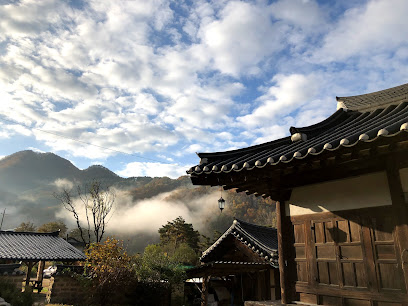
Andong Soju Museum
Discover the rich history and cultural significance of Andong soju at the Andong Soju Museum, a must-visit for any cultural enthusiast.

Andong Gunja Village
Discover the enchanting Andong Gunja Village, where rich cultural heritage meets stunning natural beauty in Gyeongsangbuk-do, South Korea.

Unmissable attractions to see
Andong Hahoe Folk Village
Explore the enchanting Andong Hahoe Folk Village, a UNESCO World Heritage Site showcasing traditional Korean culture and breathtaking landscapes.

Dosan Seowon
Explore Dosan Seowon, a serene UNESCO World Heritage site in Andong, where Korea's Confucian history meets breathtaking natural beauty.

Byeongsanseowon Confucian Academy
Explore Byeongsanseowon Confucian Academy, a historic gem in Andong-si, where culture, nature, and tranquility harmoniously come together.

Jusanji Pond
Experience the serene beauty of Jusanji Pond in Gyeongsangbuk-do, a tranquil escape surrounded by nature's splendor.
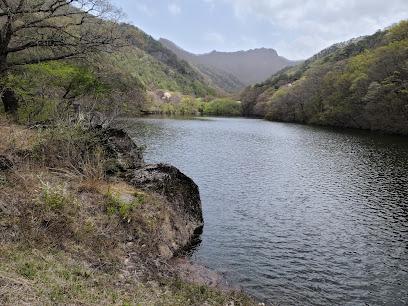
Byeongsanseowon Confucian Academy
Explore Byeongsanseowon Confucian Academy, a UNESCO World Heritage site in Andong, where history and tranquility intertwine amidst stunning landscapes.

Andong Old Market
Experience the vibrant culture and delicious cuisine at Andong Old Market, a traditional market that captures the spirit of Korea.

Hahoe Mask Museum
Explore the rich cultural heritage of Korea at the Hahoe Mask Museum in Andong, where traditional masks and performances come to life.

Cheongsong Eoreumgol Valley
Experience the breathtaking beauty of Cheongsong Eoreumgol Valley, a serene natural escape in South Korea's Gyeongsangbuk-do region, ideal for adventure and tranquility.

Bongjeongsa Temple
Explore the serene beauty and historical richness of Bongjeongsa Temple in Andong, a must-visit destination for spiritual seekers and nature lovers alike.

Manhyujeong Pavilion
Experience the tranquility of Manhyujeong Pavilion in Andong-si, a serene garden and tourist attraction showcasing traditional Korean architecture and natural beauty.

Seonbichon
Explore Seonbichon: A Serene Tourist Attraction in Yeongju-si Perfect for Nature Lovers and Peace Seekers.

Muryangsujeon Hall
Explore Muryangsujeon Hall, a tranquil heritage site in Yeongju-si, offering a glimpse into Korea's rich cultural and spiritual traditions.

Buyongdae Observatory
Experience the stunning views and tranquil atmosphere at Buyongdae Observatory, a must-visit destination in Andong-si, South Korea.

Hakgasan Hot Spring
Discover the healing powers of nature at Hakgasan Hot Spring, a serene oasis perfect for relaxation and rejuvenation in Andong, Gyeongsangbuk-do.

Andong Maskdance Festival
Discover the Andong Maskdance Festival: A vibrant celebration of traditional Korean culture with captivating performances and rich local heritage.

Essential places to dine
Iljik Restaurant
Experience authentic Korean cuisine at Iljik Restaurant in Andong-si - where tradition meets flavor in every dish.
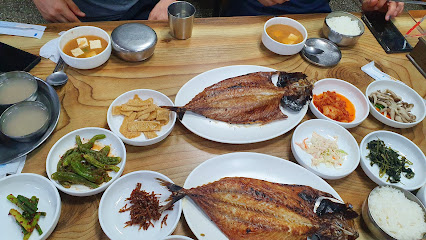
Okya Restaurant
Discover authentic Korean cuisine at Okya Restaurant in Andong-si - a culinary haven with rich flavors and welcoming ambiance.
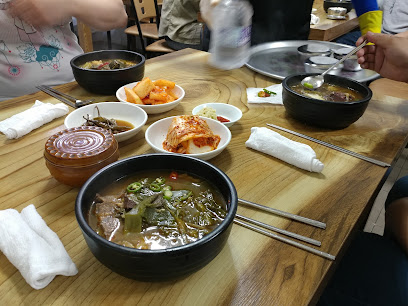
헛제사밥까치구멍집
Experience authentic Korean flavors at 헛제사밥까치구멍집 in Andong - where tradition meets taste.
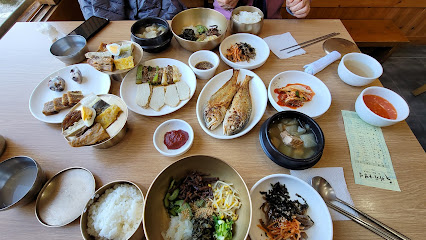
맛50년헛제사밥
Delve into authentic Korean flavors at 맛50년헛제사밥 in Andong-si – where tradition meets taste.
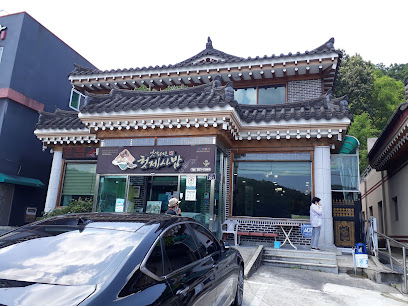
옛날이야기
Experience authentic Korean flavors at 옛날이야기 in Andong-si—where tradition meets culinary excellence.

동악골금재가든
Experience authentic Korean flavors at 동악골금재가든 in Andong-si – where tradition meets taste in every dish.

동악골고향식당
Experience authentic Korean cuisine at 동악골고향식당 in Andong-si - a culinary gem showcasing traditional flavors and warm hospitality.

고센피제리아
Experience authentic Italian cuisine at Gosen Pizzeria in Andong-si – where delicious wood-fired pizzas meet warm hospitality.
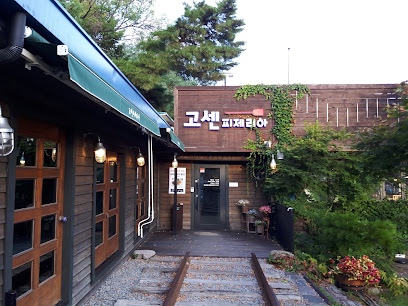
문화갈비
Experience authentic Korean cuisine at 문화갈비 in Andong, where flavorful galbi meets welcoming ambiance for an unforgettable dining adventure.

안동간고등어직영식당
Discover the taste of tradition at Andong Ganjang Gejang Restaurant, famous for its exquisite marinated crab and authentic Korean dishes.

동악골별미가든
Experience authentic Korean cuisine at 동악골별미가든 in Andong-si – a culinary treasure that captures the essence of Gyeongsangbuk-do.

몽뜨레셰프
Discover the authentic taste of Korean cuisine at 몽뜨레셰프 in Andong-si, where tradition meets flavor in every dish.

Fior Daliso
Discover the essence of Italy at Fior Daliso in Andong - where authentic flavors meet warm hospitality.

이정식당
Experience authentic Korean cuisine at 이정식당 in Andong – where tradition meets taste.

동악골원조식당
Explore authentic Korean dining at 동악골원조식당 in Andong-si - A culinary journey into tradition awaits!

Markets, malls and hidden boutiques
GS수퍼마켓 안동용상점
Discover the flavors of Andong at GS Supermarket Yongsang, your go-to spot for local produce and delicious ice cream.

낚시백화점
Explore the fishing paradise at 낚시백화점 in Andong-si, where fishing dreams come true with top-notch gear and expert advice.

썬마트
Explore Sun Mart in Andong for an authentic grocery shopping experience filled with local flavors and Korean delicacies.
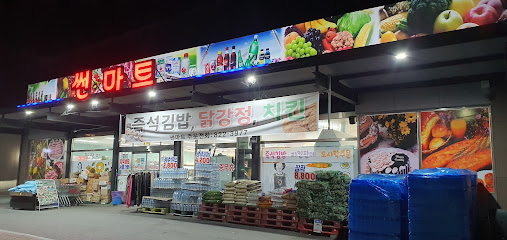
달그림자
Experience the perfect blend of rich coffee and serene ambiance at 달그림자, Andong's hidden gem for coffee lovers.

Aa
Experience the rich flavors and cozy ambiance at Aa Coffee Shop in Andong-si, a perfect retreat for coffee lovers and travelers alike.

박물관매점
Explore Andong-si's cultural treasures at 박물관매점, your go-to event ticket seller for authentic local experiences.

Gurume On
Discover the essence of Korea at Gurume On, Andong's premier souvenir store showcasing local arts and crafts.

느낌표서점
Explore the literary treasures of 느낌표서점 in Andong, where books come alive in a cozy and inviting atmosphere, perfect for tourists and locals alike.

emart24 Andong dam Branch
Explore the charming Andong region with ease by visiting the emart24 Andong Dam Branch for all your convenience shopping needs.
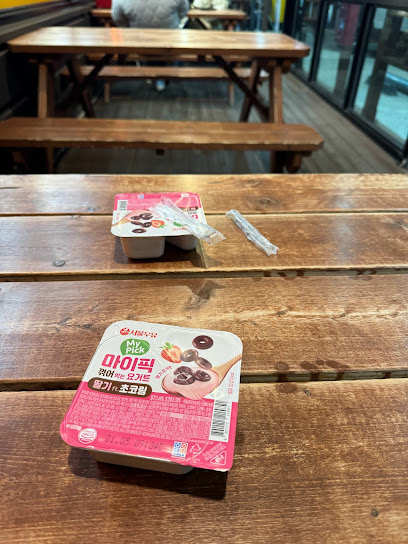
종이세상
Explore the charming novelty store 종이세상 in Andong-si, where creativity meets culture in a delightful shopping experience.

커피머신판매수리MaC가이버
Experience the essence of Andong-si at 커피머신판매수리MaC가이버, where quality coffee meets cultural charm in a cozy atmosphere.

CU Andong-dam Branch
Discover convenience in Andong with CU Andong-dam Branch, your go-to spot for snacks, drinks, and local products to enhance your travel adventure.

Odasyab
Discover unique styles at Odasyab, a clothing store in Andong blending modern fashion with traditional Korean culture.

Lalalun
Discover the cozy charm of Lalalun, a delightful coffee shop in Andong, where rich flavors meet a warm atmosphere.

SKT안동시네마점(용상점)
Experience the best of cinema in Andong-si at SKT Andong Cinema, where modern entertainment meets cultural heritage.

Essential bars & hidden hideouts
Daily Beer
Experience the lively atmosphere and diverse beer selection at Daily Beer, Andong's favorite pub for locals and tourists.

Andong Brewing Publichouse
Experience local craft brews and traditional Korean cuisine at Andong Brewing Publichouse, a vibrant hub of culture and community.

Alley
Experience the lively nightlife at Alley Bar in Andong-si, where unique cocktails and a welcoming atmosphere await every traveler.

서클페이스
Experience the vibrant nightlife of Andong-si at 서클페이스, where cocktails and live music create unforgettable memories.

Yam Bar
Experience the vibrant nightlife of Andong at Yam Bar, where traditional Korean flavors meet contemporary cocktails in a lively atmosphere.

Waba
Experience the vibrant nightlife of Andong-si at Waba, a lively bar with a welcoming atmosphere and a diverse drink selection.

ONL
Experience the vibrant nightlife at ONL, a trendy bar in Andong offering a wide selection of drinks and a lively atmosphere.

wine be 와인비
Discover the perfect blend of culture and taste at Wine Be, Andong-si's premier wine bar, where every sip tells a story.

Ida
Discover the vibrant nightlife of Andong at Ida, where exquisite drinks and a lively atmosphere await you in this charming bar.

명인안동소주 브랜드관 잔잔
Experience the exquisite fusion of tradition and modernity at 명인안동소주 브랜드관 잔잔, Andong-si's premier cocktail bar.

쵸이스호프
Discover the lively atmosphere of 쵸이스호프, a vibrant bar in Andong offering local brews, cocktails, and a chance to mingle with locals and travelers alike.

꼬꼬양앤술꾼
Discover the essence of Korean nightlife at 꼬꼬양앤술꾼, a lively bar in Andong offering unique local drinks and a warm atmosphere.

Meinba
Discover the lively ambiance and delightful drinks at Meinba, Andong's premier bar for a vibrant night out.

어느날문득
Unwind at 어느날문득, a hidden bar in Andong, where local flavors and a cozy atmosphere create unforgettable memories.

하이파이브
Discover the vibrant nightlife of Andong at 하이파이브, where local culture meets an energetic bar atmosphere.

Local Phrases
-
- Hello안녕하세요
[annyeonghaseyo] - Goodbye안녕히 가세요
[annyeonghi gaseyo] - Yes예
[ye] - No아니요
[aniyo] - Please/You're welcome부탁합니다/천만에요
[butakhamnida/cheonmaneyo] - Thank you감사합니다
[gamsahamnida] - Excuse me/Sorry죄송합니다
[joesonghamnida] - How are you?어떻게 지내세요?
[eotteoke jinaeseyo?] - Fine. And you?잘 지내요. 당신은요?
[jal jinaeyo. dangsineunyo?] - Do you speak English?영어 할 수 있어요?
[yeongeo hal su isseoyo?] - I don't understand이해하지 못해요
[ihaehaji mothaeyo]
- Hello안녕하세요
-
- I'd like to see the menu, please메뉴를 보여주세요
[menyureul boyeojuseyo] - I don't eat meat고기를 먹지 않아요
[gogireul meokji anayo] - Cheers!건배!
[geonbae!] - I would like to pay, please계산할게요
[gyesanhalkkeyo]
- I'd like to see the menu, please메뉴를 보여주세요
-
- Help!도와주세요!
[dowajuseyo!] - Go away!가세요!
[gaseyo!] - Call the Police!경찰을 불러주세요!
[gyeongchareul bulleojuseyo!] - Call a doctor!의사를 불러주세요!
[uisareul bulleojuseyo!] - I'm lost길을 잃었어요
[gireul ilheosseoyo] - I'm ill아파요
[apayo]
- Help!도와주세요!
-
- I'd like to buy...사고 싶어요...
[sago sipeoyo...] - I'm just looking둘러보고 있어요
[dulleobogo isseoyo] - How much is it?얼마에요?
[eolmaeyo?] - That's too expensive너무 비싸요
[neomu bissayo] - Can you lower the price?가격을 깎아 주실 수 있나요?
[gageogeul kkakka jusil su innayo?]
- I'd like to buy...사고 싶어요...
-
- What time is it?지금 몇 시에요?
[jigeum myeot sieyo?] - It's one o'clock한 시에요
[han sieyo] - Half past (10)십 시 반
[sip si ban] - Morning아침
[achim] - Afternoon오후
[ohu] - Evening저녁
[jeonyeok] - Yesterday어제
[eoje] - Today오늘
[oneul] - Tomorrow내일
[naeil] - 1일
[il] - 2이
[i] - 3삼
[sam] - 4사
[sa] - 5오
[o] - 6육
[yuk] - 7칠
[chil] - 8팔
[pal] - 9구
[gu] - 10십
[sip]
- What time is it?지금 몇 시에요?
-
- Where's a/the...?...이 어디에 있어요?
[...i eodie isseoyo?] - What's the address?주소가 뭐에요?
[jusoga mwoeyo?] - Can you show me (on the map)?지도로 보여주세요
[jidoro boyeojuseyo] - When's the next (bus)?다음 버스는 언제와요?
[daeum beoseuneun eonjewayo?] - A ticket (to ....)표 한 장 주세요 (...으로)
[pyo han jang juseyo (...euro)]
- Where's a/the...?...이 어디에 있어요?
History of Andong
-
Andong's history dates back to the Three Kingdoms period of Korea, when it was known as Gochang. The city was officially founded in 930 AD during the Later Three Kingdoms period by King Taejo of the Goryeo Dynasty. This strategic location served as a key military base and cultural center in the region.
-
Hahoe Folk Village, a UNESCO World Heritage Site, represents the typical clan village of the Joseon Dynasty. Established by the Ryu clan in the 15th century, the village is renowned for its well-preserved traditional Korean houses and the unique mask dance drama, Hahoe Byeolsingut Talnori, which was performed to appease spirits and bring good fortune.
-
Andong has long been a center for Confucian learning and culture. The Dosan Seowon, established by the philosopher Yi Hwang, also known as Toegye, in the 16th century, remains one of the most prominent Confucian academies in Korea. The academy played a significant role in the spread of Confucian ideals and education.
-
The origins of Andong Jjimdak, a popular Korean dish, can be traced back to the Andong region. This spicy braised chicken dish is said to have been created in the traditional markets of Andong during the Joseon Dynasty. It has since become a culinary symbol of the city.
-
The Andong Mask Dance Festival, held annually in October, is one of the most famous cultural events in South Korea. This festival celebrates traditional Korean mask dances, known as Talchum, which date back to the Goryeo Dynasty. The festival attracts performers and visitors from all over the world, highlighting the rich cultural heritage of Andong.
-
During the Korean War, Andong played a critical role as a strategic stronghold for South Korean and UN forces. The city was heavily contested and saw significant conflict, which left a lasting impact on its development and infrastructure. The resilience and recovery of Andong post-war is a testament to the spirit of its people.
-
Andong is famous for its traditional distilled liquor, Andong Soju. With roots dating back to the Goryeo Dynasty, this potent spirit was traditionally consumed by nobility and has been meticulously crafted following ancient recipes. Andong Soju is celebrated for its unique taste and cultural significance.
Andong Essentials
-
Andong is located in the Gyeongsangbuk-do province of South Korea. The nearest major airport is Daegu International Airport, approximately 90 kilometers away. From Daegu, you can take a direct bus or a train to Andong. The journey typically takes around 1.5 to 2 hours by road or rail. Alternatively, you can take an express bus from Seoul, which takes about 3 hours.
-
Andong has a well-connected public transportation system, including buses and taxis. The city is small enough that many attractions are within walking distance. For longer trips, local taxis are readily available and relatively inexpensive. Renting a car can also be a convenient option for exploring the surrounding areas at your own pace.
-
The official currency in South Korea is the South Korean Won (KRW). Credit cards are widely accepted in hotels, restaurants, and shops. However, it is advisable to carry some cash, especially for smaller establishments and traditional markets. ATMs are available throughout Andong, and most ATMs accept international cards.
-
Andong is generally a safe destination for tourists. However, it is advisable to take standard precautions, such as avoiding walking alone at night in unfamiliar areas and keeping an eye on your belongings in crowded places. There are no specific high-crime areas targeting tourists, but it is always best to stay vigilant and aware of your surroundings.
-
In case of emergency, dial 112 for police assistance and 119 for medical emergencies or fire. Andong has local police stations and medical facilities. It is recommended to have travel insurance that covers medical emergencies. For minor health issues, there are pharmacies in the city where you can purchase over-the-counter medications.
-
Fashion: Do dress modestly, especially when visiting religious sites. Avoid wearing overly revealing clothing. Religion: Do respect local customs and traditions. Always remove your shoes before entering temples. Public Transport: Do be respectful and give up your seat to elderly passengers. Don't speak loudly on public transport. Greetings: Do greet people with a slight bow or a handshake. Eating & Drinking: Do try local delicacies and accept food offerings graciously. Don't refuse hospitality, as it is considered impolite.
-
To experience Andong like a local, visit the Hahoe Folk Village, a UNESCO World Heritage Site, where you can see traditional Korean houses (hanok) and cultural performances. Engage with locals, as they are often friendly and willing to share stories about the city's history and culture. Don't miss trying Andong Jjimdak, a local chicken dish, at one of the traditional markets or restaurants.
Trending Landmark in Andong
Nearby Cities to Andong
-
Things To Do in Pohang
-
Things To Do in Daegu
-
Things To Do in Gyeongju
-
Things To Do in Ulsan
-
Things To Do in Daejeon
-
Things To Do in Busan
-
Things To Do in Jeonju
-
Things To Do in Chuncheon
-
Things To Do in Suwon
-
Things To Do in Seoul
-
Things To Do in Incheon
-
Things To Do in Suncheon
-
Things To Do in Gwangju
-
Things To Do in Mokpo
-
Things To Do in Fukuoka









